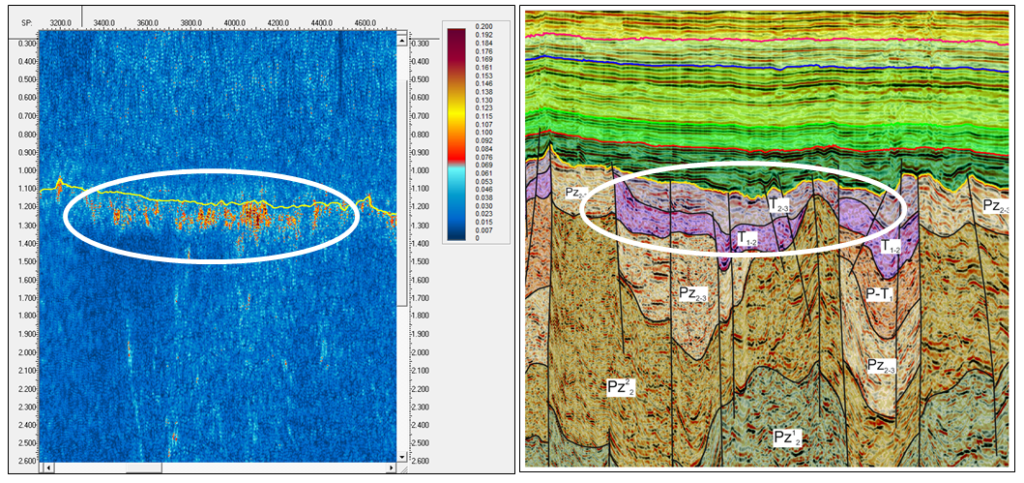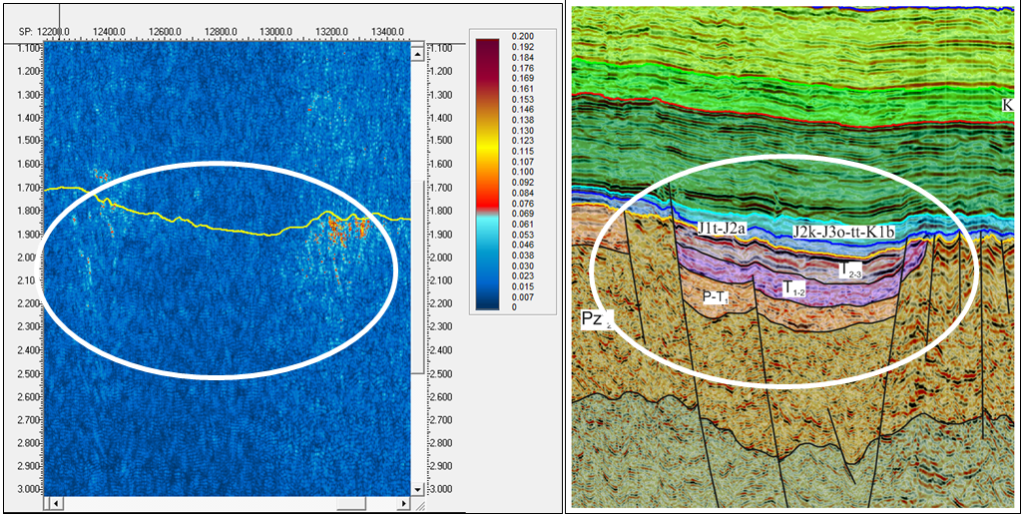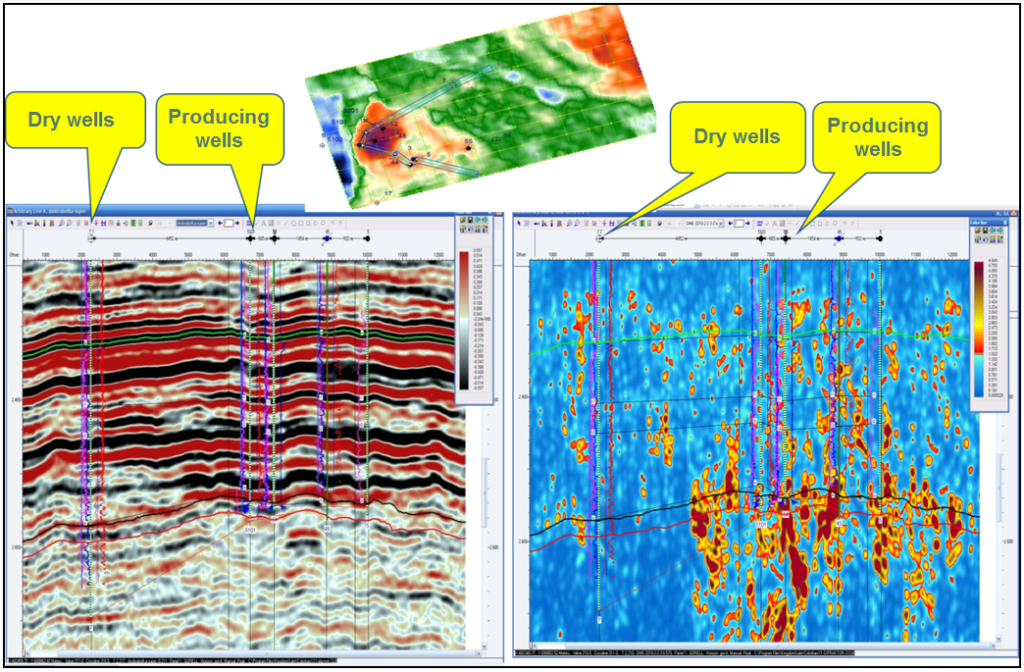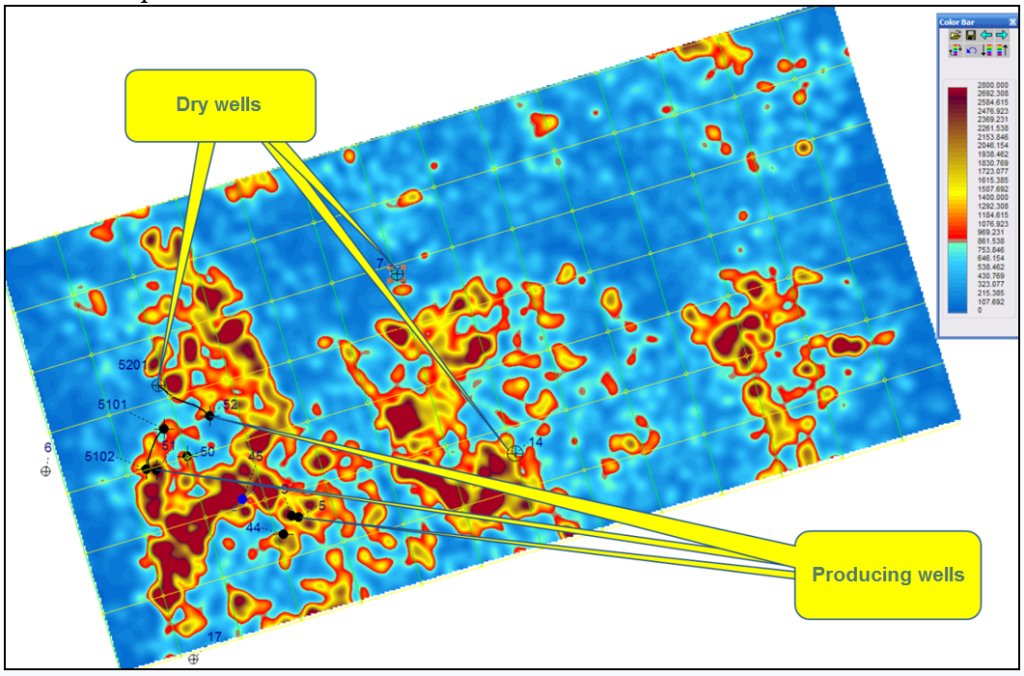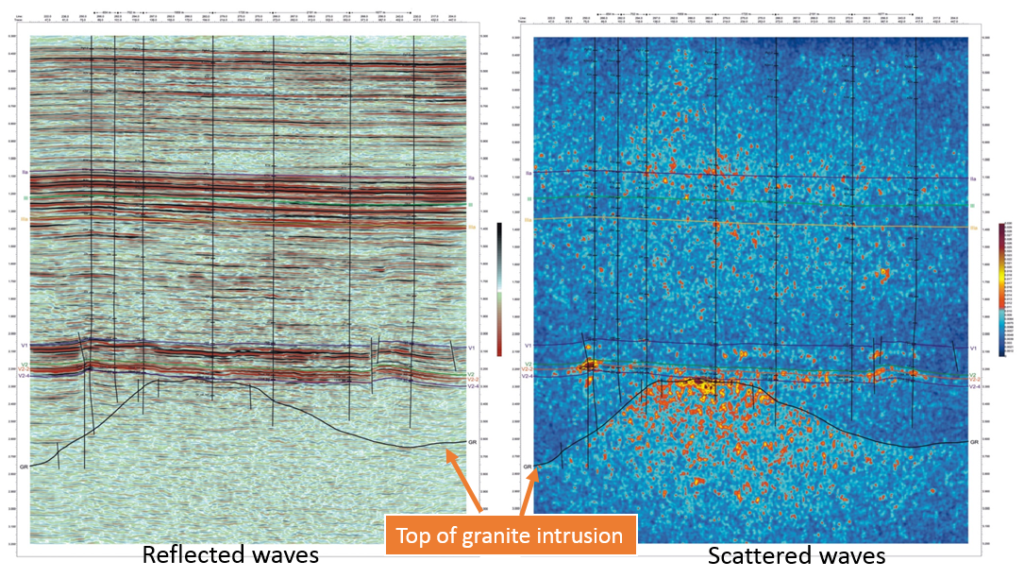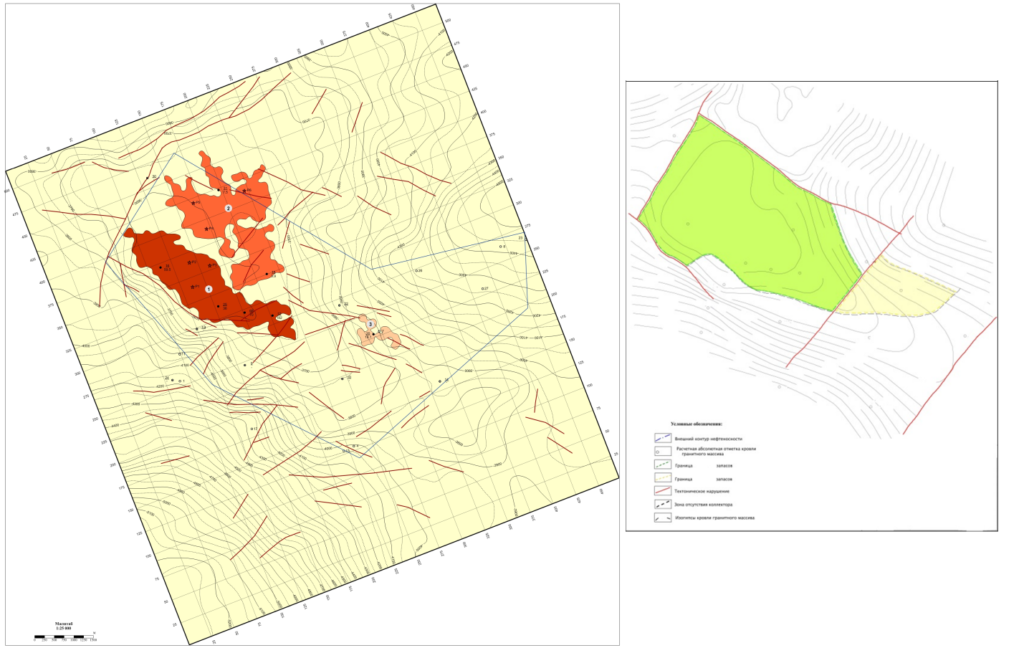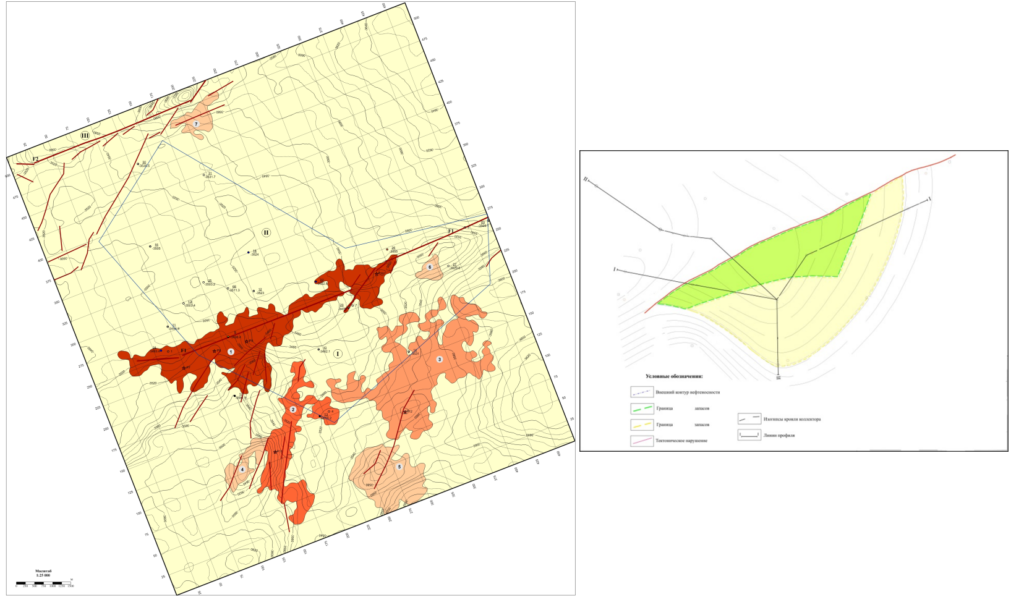FractureCSP (Common Scattering Point) – technology of processing and interpretation the standard seismic data to identify fractured zones by extracted scattered waves.

The essence of innovation
FractureCSP technology based on scattered waves, separated from the full seismic wave field and makes it possible to detect fractured reservoirs. It implements a rigorous solution of the inverse problem of dividing the full wave field into reflected and scattered components. Mathematically corrected waves separation allows to visualize the scattering elements invisible after standard seismic data processing
Team
Our team consists of highly qualified staff, experts in the oil and gas industry and mathematics from around the world.
Specialists of the “Technology of inverse problems” company have participated in international exhibitions and conferences.
Competitive advantages
- The accuracy of fractured reservoir forecast exceeds 80%.
- Additional field works is not required.
- Technology uses the mathematically corrected solution of inverse problem, therefore, the human factor is excluded
- 100% domestic development without external dependencies.
The results achieved
- Technology is implemented as a software package “CSP-PSTM 2D/3D”.
- Today processed more than 15000 km of 2D and 6000 square kilometers of 3D seismic data on 50 fields.
- Technology efficiency proved in fractured reservoirs at oil and gas bearing basins of Russia and foreign countries
- Customers – the world’s largest oil and gas companies.
Market potential
According to geologists, fractured reservoirs contain more than 25% of the world’s oil reserves. The market of 3D seismic work in the development of continental and offshore fields today are a multibillion – dollar industry (in the U.S. Only for research in the area of seismic operations spent about $ 1 billion per year).
Fractured Reservoirs Detection Based On FractureCSP Technology
1. Technology description
A significant part of the world’s oil and gas reserves are concentrated in the fractured and fractured-cavernous reservoirs. These unconventional types of reservoirs are distributed all over the world, include Middle East, the North Caucasus, the Caspian Basin, Siberia and others.
Deposits in fractured reservoirs are unconventional and complicated. Oil migration and accumulation in such reservoirs is controlled by fractured zones. The efficiency of prospecting such deposits by traditional methods is much lower than that of deposits with traditional porous reservoirs.
The geometry of the reflecting horizons (reflectors), which is the main result of traditional seismic data processing, is completely insufficient for detecting fractured reservoirs. Fractured zones do not form seismic reflections, but they are sources of scattered (diffracted) waves. Scattered waves has 1-2 orders lower amplitudes than reflected waves, therefore they do not appear on standard sections.
«Technologies of Inverse Problems» company has developed innovative technology for specialized seismic data processing and interpreting, called FractureCSP (Common Scattering Point). The technology based on scattered waves, separated from the full seismic wave field and makes it possible to detect fractured reservoirs. It implements a rigorous solution of the inverse problem of dividing the full wave field into reflected and scattered components. Mathematically corrected waves separation allows to visualize the scattering elements invisible after standard seismic data processing (Fig. 1).
Seismic data processing using FractureCSP technology is implemented in the «CSP-PSTM» ™ software designed for high-performance computing clusters.
The technology has high resolution. Figure 2 at the top shows the anticlinal fold model used to compute the synthetic seismic data. The model consists of three layers. The middle layer, 50 m thick, contains scattering elements – circular inclusions 40 m in diameter. These inclusions imitate fractures. The time section after standard technology of seismic data processing (middle part of the figure) contains only reflective boundaries, but scattering elements are completely invisible. At the same time, the diffractors are very clearly visible in the section obtained by the FractureCSP processing (lower part of the figure). In this case, the amplitudes of scattered waves are less than the amplitudes of the reflected waves from 50 (left inclusion) to 250 (right inclusion) times.
The FractureCSP technology can solve the following tasks:
- Detection fractured and decompaction zones which may consist oil and gas deposits.
- Unconventional fractured reservoirs contouring for hydrocarbon reserves estimation.
- Classification the faults by their permeability.
- Detection the faults without vertical shift.
- Natural fractured zones consideration in well drilling process.
- Designing the optimal location of multistage hydraulic fracturing ports.
- Case studies.
The presented examples show how we can use FractureCSP technology for solving real geological tasks.
Case study 1.
In the south of the Tyumen region, two regional seismic profiles were analyzed. Early, the geological models of fold basement have been created by standard seismic processing and interpretation technology. Using FractureCSP specialized processing shows higher efficiency and make possible to solve these tasks:
- Fractured reservoirs detection and mapping.
Fractured zones are the source of scattered waves and it clearly detected on scattered waves sections (fig 3). It’s impossible to identify such zones on reflected waves sections (standard seismic technology).
- Faults classification by permeability.
Fluid-permeable faults are extended areas with open fractures; as a rule, a zone of fractured rocks is created around the axis of such faults, this zone can be up to several kilometers wide. This faults are channels for fluid migration and can create a separate fractured reservoir. Fluid-permeable faults and their accompanying fractured zones has high amplitude values of scattered waves on sections (fig. 4).
Fluid-impermeable faults are the screens or barriers for fluid migration. Interstices of this faults are filled (healed) with secondary minerals. This faults are screens in tectonically-screened deposits, and usually separate deposits into blocks which are not hydrodynamically connected to each other. Fluid-impermeable faults don’t contain open fractures and don’t appear in scattered waves (fig. 5).
Complex interpretation of the reflected and scattered waves fields makes it possible to obtain much more information useful for forecasting oil and gas deposits than when interpreting only the field of reflected waves.
Case study 2
Oilfield is located in West Siberia. Oil deposits are concentrated in the upper part of the Devonian age basement which consist of carbonate rocks. The type of reservoir is fractured-cavernous. The deposits are massive and are not controlled by the structural plan. Capacitive-filtration properties of the reservoir change sharply across the area and along the vertical section. The maximum oil inflows are obtained from organogenic limestones. The reservoir thickness varies from 0 to 100 meters.
As a result of FractureCSP processing, reflected waves (reflectors) and scattered waves (diffractors) volumes were processed (Fig. 6)
On the diffractors volume, producing wells are shown in red, and dry wells are shown in white. As can be seen, both on the volume and on the section (Fig. 7), producing wells are located in the high amplitudes zones of the scattered waves created by fractured reservoirs.
Scattered waves map of producing interval was built and analyzed (fig. 8). The zones with high amplitudes are interpreted as fractured-cavernous reservoirs.
The analysis showed that the all producing wells are located in the zones with high scattered waves amplitudes (in the fractured reservoirs zones), and dry wells in the zones with low amplitude values (the zones without natural fractures).
The final volume of scattered waves can be used to build a reservoir filtration model.
Case study 3.
Fractured reservoirs reserves estimation by FractureCSP technology
The work was carried out at one of the fields in Kazakhstan Republic. The oilfield has two producing intervals with fractured reservoirs: Paleozoic age granite intrusion and the volcanic-carbonate layer of the Middle Triassic age.
The granite intrusion does not visualize in reflected waves but scattered waves make it possible (fig. 9). Also FractureCSP processing made possible to identify the fractured part of the reservoir and to calculate the geometric parameters resources estimation: the reservoir area and its effective thickness.
Three fractured reservoirs with oil deposits were identified in the granite intrusion. The boundaries of oil deposits in the granite intrusion were determined by the analysis of scattered waves maps and sections (Fig. 9). Previous reserves estimation was made by the standard technology (using reflected waves), the authors identified a single massive deposit in a granite intrusion and unable to predict fractures (Fig. 10).
Seven reservoirs have been identified in the Middle Triassic volcanic-carbonate layer (Fig. 11). Resources are calculated separately for each reservoir. The boundaries of oil deposits were determined by the analysis of scattered waves maps and sections, and also an attributes of reflected waves were used. Previous researchers believed that the reservoir in the Triassic is simple, structural and fault screened. But using FractureCSP we can identify the difficult structure of the fractured reservoirs.
As a result of resources recalculation using scattered waves, was an increasing the perspective resources of field. The main growth in oil resources was in the Middle Triassic deposits, resources growth 3 times, in granites the resources increased 2 times (Fig. 12). The resources growth as a result of the fractured reservoirs detection by scattered waves and an increase in the oil-saturated volume of the reservoir.
- Summary
FractureCSP is innovative technology for fractured reservoirs forecasting and unconventional reserves estimation, it can be used both in already developed fields, and in newly explored ones.
The FractureCSP technology has been tested on synthetic and field materials and has shown high efficiency in detecting fractured and fractured-cavernous reservoirs in carbonate, clay and igneous rocks.
The technology processed more than 15 thousand kilometers of 2D seismic profiles and about 6000 sq. km of 3D surveys at 60 fields.
Regions of realized works:
- All Russian oil-and-gas provinces
- Kazakhstan republic
- Poland
- China
- Canada
- Brazil
- Antarctic region


